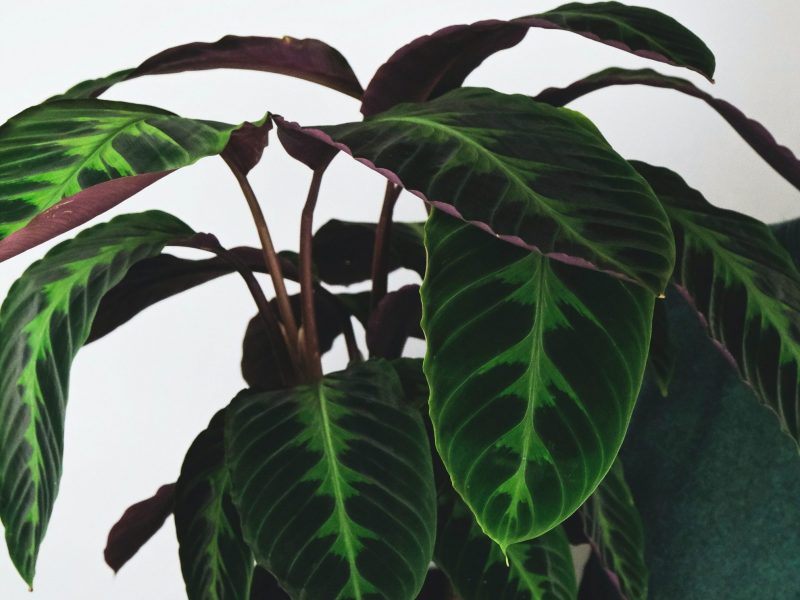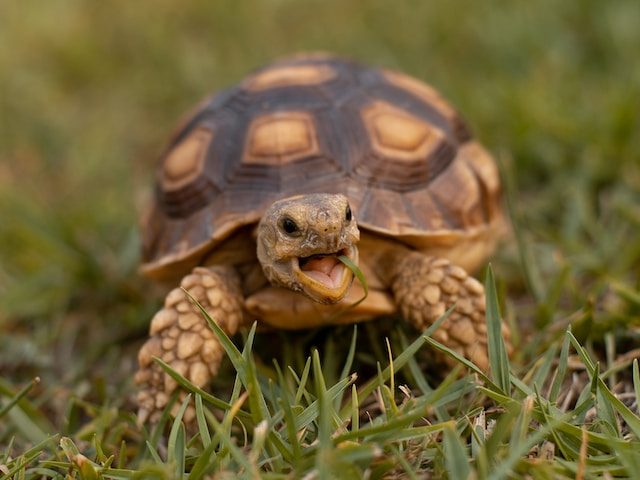
It can be pretty frustrating and worrying to find that your Calathea Jungle Velvet is struggling and you can’t figure out what’s causing it. Often there are quite a few different reasons why the same problems occur, so it’s all about knowing what specific signs to look for to make the proper diagnosis.
Below we will go over the 5 main problems that plant parents face when caring for a Calathea Jungle Velvet. This post also includes what you need to do to treat the problem properly, as well as how to prevent it from harming your plant again in future.
Causes of brown leaves on a Calathea Jungle Velvet
Underwatering.
Whilst this won’t cause brown leaves overnight, consistent underwatering will start to dry out the root system, which in turn dries out the stems and leaves on your Calathea Jungle Velvet, turning them brown. This will usually appear quite light brown in colour which is one way to tell if it’s being underwatered. To confirm this is the issue, check the moisture levels in the soil and see if the roots have started to crisp. If they have, this indicates that the issue has been going on for a while. Adjust your watering schedule moving forward but don’t drown your Calathea Jungle Velvet as this will cause shock and won’t solve the issue.
Low humidity can cause brown leaf tips.
Native to the tropical rainforests of Central and South America, Calathea Jungle Velvet plants love a humid environment and this often gets forgotten alongside watering and sunlight requirements. Luckily, this is an uneasy issue to prevent progressing any further as you just need to get into the habit of misting your plant with a spray bottle every few days or using a humidifier to keep a nice stable humidity level.
Water sensitivity.
Although this is quite a rare issue, if your Calathea Jungle Velvet has brown leaf tips and the issue isn’t humidity, then you should also consider sensitivity to chemicals in the tap water. If you live in a hard water area then this can be a real issue. One way to know if chemical sensitivity is the cause of the brown leaf tips on your Calathea Jungle Velvet is if the issue has been very slow to take a hold of your plant. It won’t happen from one day to the next, but over months if brown leaf tips are slowly occurring then this could be the problem. You might also be able to spot white salt-like powder on the roots or on top of the soil.
Cold temperatures.
It’s really important that you keep your Calathea Jungle Velvet away from areas that are often drafty. This can be both drafty doors/windows in winter or even air conditioning vents in summer. It’s best to invest in a digital thermometer if you don’t already have one to check that your Calathea Jungle Velvet is in a good spot temperature-wise.
Causes of yellow leaves on a Calathea Jungle Velvet
Overwatering.
Too much water is the most common factor in why Calathea Jungle Velvet plants turn yellow and we recommend ruling out this issue before looking at the others. Overwatering can very quickly harm your plant, so you want to treat this one as soon as possible to prevent more damage to the root system. Measure the moisture in the soil and replace it with fresh dry potting mix if needed. To prevent the issue from happening again, make sure that the soil has time to dry out between waterings.
Direct sunlight can cause yellow patches.
If watering isn’t an issue with your Calathea Jungle Velvet, and the yellowing on the leaves is quite patchy, rather than one solid yellow leaf, then it might be intense light that’s the cause. During summer, if your Calathea Jungle Velvet is too close to the window, the sun can actually burn the leaves, resulting in yellow patches. Although the yellowing is irreversible, moving your Calathea Jungle Velvet to a spot that doesn’t receive any direct light (bright, indirect is ideal) will stop any more yellow patches from developing.
Natural ageing.
If the rate of yellowing is quite slow, then it might simply be the natural ageing process that’s behind it. As your Calathea Jungle Velvet gets older, it will prioritise its energy for growing new bigger growth. This means that every year it will shed some of its oldest and smallest leaves. These leaves will often turn solid yellow before falling off your plant.
Why is my Calathea Jungle Velvet losing leaves?
Low temperatures.
Cold drafts can be very harmful to your Calathea Jungle Velvet and the stress caused can mean they lose a few leaves as a result. Use a thermometer to check the temperature around your plant and move them to a more suitable spot if required. Be wary of cracks in windows or external doors as when the temperature drops at night, this can be very harmful to your plant.
Temporary shock.
If you have recently moved your plant to a new spot, repotted it, propagated it or if it gets knocked around a lot by pets or children, then this stress can cause it to drop a few leaves. As long as the environment and care routine is giving your Calathea Jungle Velvet everything it needs, it should stop losing leaves after about a week. This stress/shock is temporary so monitor the rate of leaf drop.
Natural ageing.
If your Calathea Jungle Velvet is only losing a few leaves each year but nothing in the environment is changing that would indicate stress or fluctuations in temperature, then this leaf drop might be natural. This happens when your Calathea Jungle Velvet wants to focus its energy on new leaves so will lose some of its smallest and oldest leaves.
Why is my Calathea Jungle Velvet drooping?
Underwatering.
Although consistent underwatering can cause brown leaves on your Calathea Jungle Velvet, a drooping plant can often be the precursor to these more serious problems. This happens when the roots start to dry up, preventing your plant from getting what it needs to survive.
Check the potting mix and root system to confirm before slowly reintroducing more frequent watering. Moving forward, it’s important to keep an eye on how much you are watering your Calathea Jungle Velvet by checking the moisture in the soil frequently.
Overwatering.
It might seem strange but the opposite can actually also cause your Calathea Jungle Velvet to droop down, so it’s very important to determine which is the cause. There would be nothing worse than watering an overwatered Calathea Jungle Velvet more because you thought it was being underwatered.
As with underwatering above, check the soil to see if it is soggy or holding onto too much excess water and replace the wet soil with fresh mix. This will mean your Calathea Jungle Velvet can begin the recovery process and should stop drooping as the roots get stronger.
Causes of curling leaves on a Calathea Jungle Velvet
Underwatering.
Plants curl up their leaves as a way to retain as much moisture so your Calathea Jungle Velvet might have curling leaves due to underwatering.
Measure the moisture in the soil (by using a moisture meter or another method) and if the soil is incredibly dry and the roots look and feel crispy, then give your plant a little bit of water once a day for a week before going back to a more regular schedule. Luckily, curling leaves are reversible if the issue hasn’t progressed too far, so you should see the leaves start to uncurl in a few days.
Temperature extremes.
If you’ve checked the potting mix and there aren’t any issues with the moisture levels, then high heat might be why your Calathea Jungle Velvet has curling leaves.
Although they thrive in warmer environments, intense hotspots can dry out the plant and cause it to curl up. These can occur next to windows in summer but also near radiators and cookers.
The key to preventing all of these issues from progressing too far that you’re unable to revive your Calathea Jungle Velvet is to catch the problem early. Therefore, we recommend that each time your water your plant, you give it a quick once over, inspecting the leaves thoroughly. This will give you the best chance at quickly solving any issues that crop up.
Take a look through our Calathea Jungle Velvet care guide to find out more about how to best keep your plant happy and healthy.














